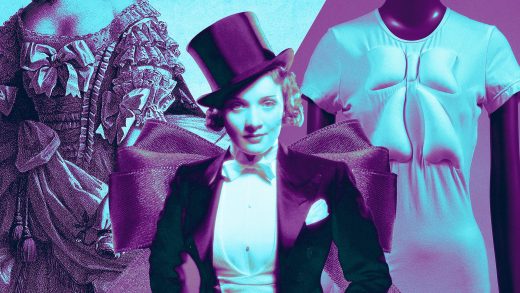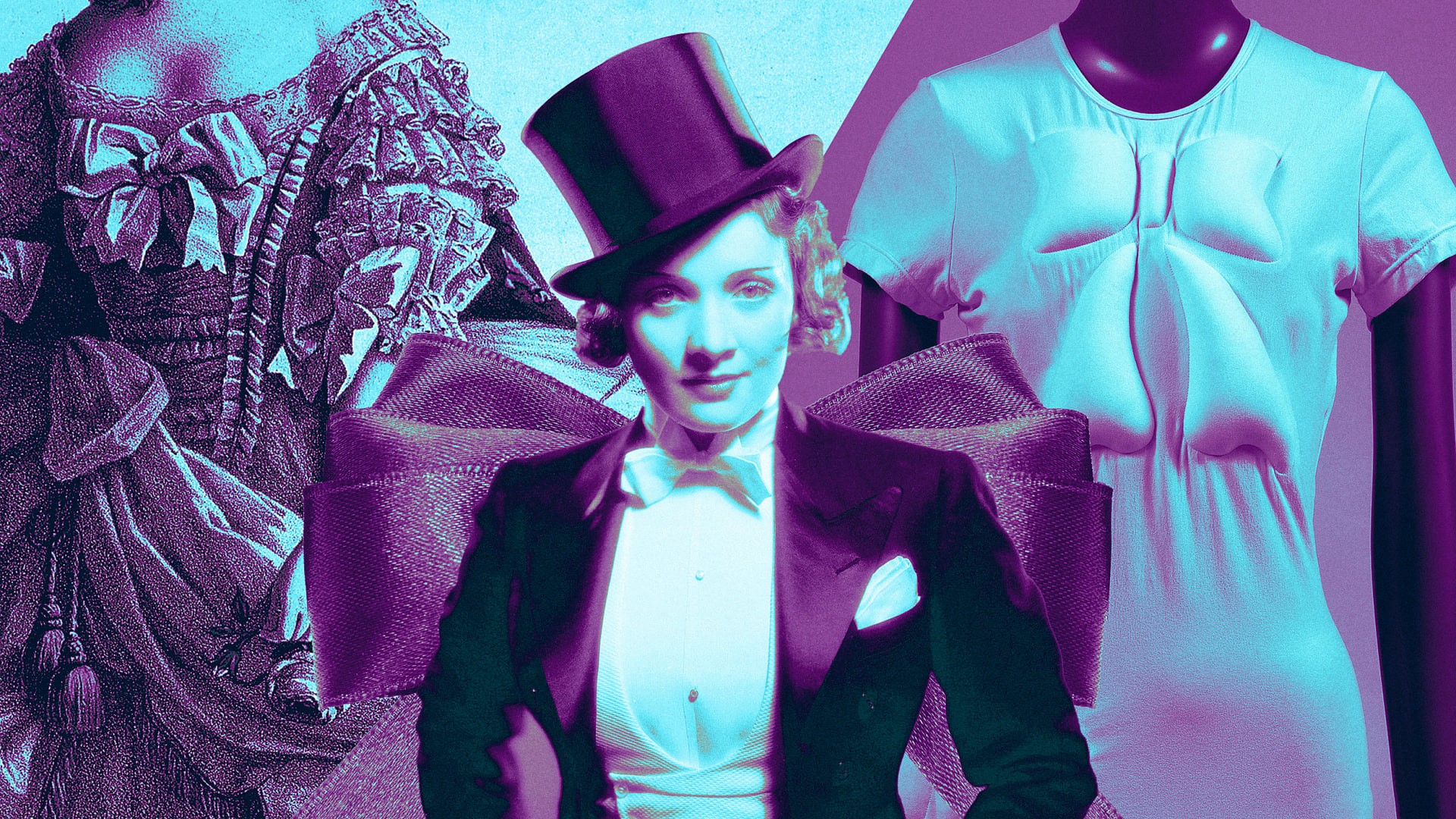The bow is having a fashion moment—but did it ever really go away?
The bow is having a fashion moment—but did it ever really go away?
The history of the bow is long and gender-neutral.
If you have spent any time on the internet lately, you may have noticed the world is currently awash in bows. TikTokers are tying bows to everything from ponytails to . . . ice cubes. Bows starred at Prada’s 2024 Fashion Week Show and Couture Fashion Week SS24. They made several appearances at the 2024 Golden Globes. And last but not least, Sarah Jessica Parker launched a collection of vintage bows inspired by her NYC Ballet Gala look. (Most of them have already sold out.)
The bow is having a moment, but then again, was it ever not having a moment?
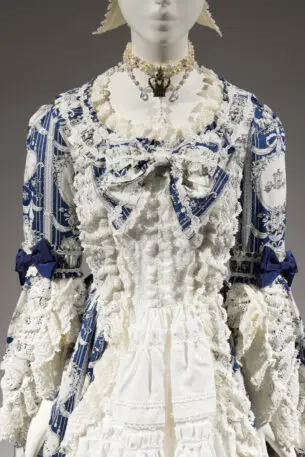
Judging from a new exhibition at the Fashion Institute of Technology’s museum in Manhattan, the bow has been a mainstay in fashion for as long as it has existed—namely for centuries. The exhibition is titled Untying the Bow and was curated by graduate students in FIT’s MA Fashion and Textile Studies program. It explores the history and symbolism of the bow as it has transcended time, style, and gender. Because even though the bow remains closely associated with girlhood and female empowerment today (think Kamala Harris wearing a pussybow blouse at her victory speech) it has always played a crucial role across the gender spectrum.
The history of the bow
The bow has existed for as long as humans have secured things. Before it entered fashion, it was a utilitarian knot valued for its ability to be untied easily. All you had to do is pull on either ends to loosen it. This meant that you could take a piece of fabric and use it to tie garments, bonnets, or collars and adjust for various sizes. “Clothing wasn’t always tailored, so a lot of things had to be tied,” says Claire Zimmeth, one of the graduate students who curated the exhibition.
What’s interesting about the bow, however, is that even though it is functional by definition, it often reads as decorative because of the way it looks. As fabric creation techniques improved, the bow mostly lost its utility and became purely aesthetic: think decorative bows on women’s pumps, or pre-tied bow ties on men’s collars. (The exhibition includes an ad from a 1930s Saturday Evening Post advertising pre-tied bowties that were “tied by feminine fingers.”)
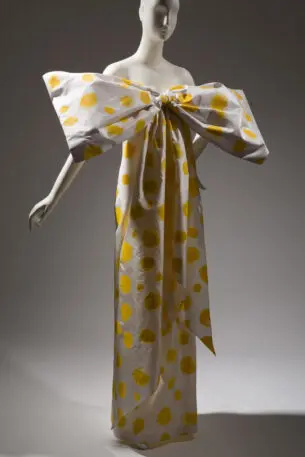
Throughout history, both men and women wore bows. Greco-Roman women styled their hair into bow shapes. Roman senators tied their sandals using specific bows that were limited to men of a certain class. Marie Antoinette—“queen of excess”—will forever be remembered for her eccentric dresses replete with ribbons and bows. But decorative bows were equally present in men’s fashion, most notably shoes.
Somewhere along the way, however—perhaps in the early 19th century as men’s clothing became more tailored and colors took a backseat—the bow largely disappeared from men’s fashion. But there was one exception: the bow tie.
The bow tie originated among 17th-century Croat mercenaries, who tied scarves around their necks to hold their shirts. The style, then known as a cravat, was soon adopted by the French upper class before flourishing in the 18th and 19th centuries.
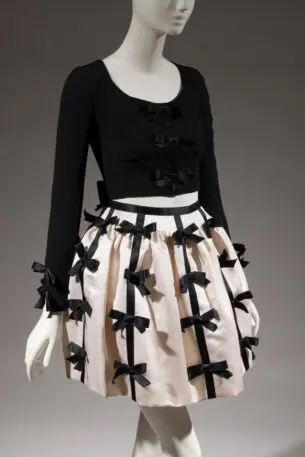
Since then, the bow tie has cemented its place as a symbol of status. This might be why, in the 1930s, as women in the U.S. entered the workforce in significant numbers, they started to wear bows to reclaim it from men and emphasize their femininity in a male-dominated environment.
During her time as Britain’s PM in the 1980s, Margaret Thatcher became famous for her power dressing suits and pussybow blouses. At Obama’s first inauguration in 2009, Aretha Franklin donned a showstopping hat with an oversized bow encrusted with Swarovski crystals. Even Rosie the Riveter tied her iconic polka-dot headband into a bow. “Part of status is being a man, so this is them trying to get that status,” says Zimmeth.
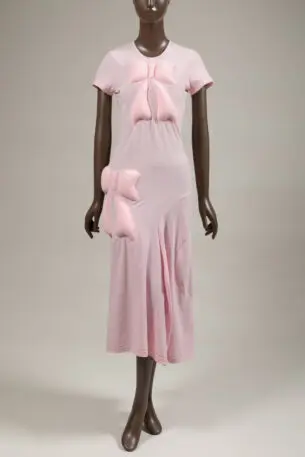
Now, the pendulum has swung once again and the bow is inextricably linked with feminine TikTok aesthetics like cottagecore, Coquette, Barbicore, or balletcore. “There’s a big girlhood thing happening right now, which I think is bringing the bow back out too,” says Elyse Sedoremallin, another student who was involved in the exhibition. “I think it is so associated with femininity.”
But maybe not for long. In 2020, queer designers Tanner Richie and Fletcher Kasell founded the genderless fashion brand Tanner & Fletcher. Since then, the brand has become synonymous with chunky knits, ruffles—and bows. Lots of bows. Zimmeth says that the association with femininity has been so strong that brands like Tanner & Fletcher, and consequently men who are trying to blur the gender binary, are consciously adopting the bow as a fashion statement: “I think it’s interesting,” she says, “because we’re trying to show that [the bow] has always existed outside of the binary.”
Recognize your company’s culture of innovation by applying to this year’s Best Workplaces for Innovators Awards before the final deadline, April 5.
(20)

